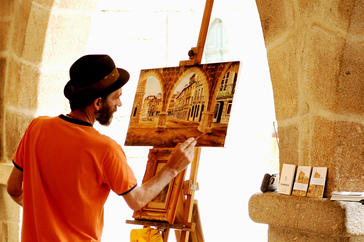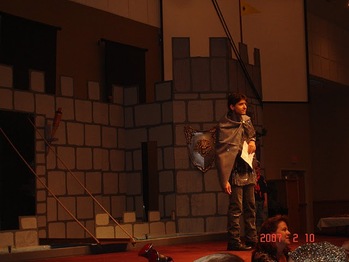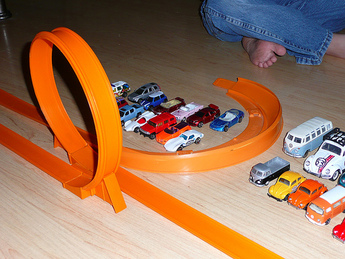What is Multiple Intelligence?

Multiple Intelligence is a theory created by Howard Gardner in 1983. The theory is created to further understand human intelligence and not just limit human intelligence to IQ tests. Dr. Gardner proposed eight type of intelligences:
Howard Gardner says that our society and schools places too much emphasis on nurturing the linguistic and logical-mathematical individuals aka the academically-excelling people. These are the engineers, scientists, technicians and accountants. He believes that we should also give attention to those that are intelligent in other ways such as musically or bodily-kinesthetically.
- Spatial
- Linguistic (Language)
- Logical-Mathematical
- Bodily-kinesthetic (Body Movement)
- Musical
- Interpersonal (Social)
- Intrapersonal (self)"
- Naturalistic
Howard Gardner says that our society and schools places too much emphasis on nurturing the linguistic and logical-mathematical individuals aka the academically-excelling people. These are the engineers, scientists, technicians and accountants. He believes that we should also give attention to those that are intelligent in other ways such as musically or bodily-kinesthetically.
These are the artists, musicians, singers, producers, directors, dancers, scriptwriters, interior designers... These people also enrich the world we live in and make it a better place, they make it possible for us to have movies like 'Inception' to enjoy, for us to have korean dramas to watch, for us to have pretty homes to live in, so why should they be given less attention and different treatment from academically-excelling individuals? Individuals who excel linguistically, logical-mathematically have also brought out world much joy and make it easier to live. Individuals who excel in other intelligences have done the same too. It is only reasonable that we give everyone the same treatment so they can have the resources to thrive and grow, and become the next Michael Jackson or Leonardo Di Caprio. Giving more attention to individuals who excel in other intelligences besides linguistically and logical-mathematically is one aspect Multiple Intelligence is trying to change.
Multiple Intelligence has aroused interest amongst Educators across United States. There are currently hundreds of school using it's principles to teach kids in school. Instead of the usual boring lectures, numerous worksheets and multiple choices, teachers are using MI (Multiple Intelligence) to teach in more diverse and interesting ways. How?
Imagine this. Perhaps a kid learn better not through lectures and worksheets, but hands on activities. A teacher who's currently teaching "Electricity" might ditch the textbook method (which will mostly appeal to learners who learn best logical-mathematically, linguistically and spatially) and instead bring the kids to a power station and let them see how it works in real life. He might also ask students to bring in old clocks and radios and other electronics and disassemble them to learn more about circuits. This appeals to students who learn well bodily-kinesthetically. The possibilities of methods of learning are endless. Not only do they arouse interest in kids (new method? OH YES!), they also help them learn by providing more and different ways of learning. It is important to remember that no one uses just one type of intelligence. In our everyday lives, we use a mixture of all the types of intelligences. It is only figuring out our strengths and best intelligences so we can fully make use of it.
Yes, it is hard to appeal to only one type of learners but students learn in many different ways. So presenting more options to them instead of forcing them to conform with the typical linguistic and logical-mathematical teaching will allow students who learn better with other methods to unleash their potential.
See case studies
More info on Multiple Intelligence
Images obtained from:
Yes, it is hard to appeal to only one type of learners but students learn in many different ways. So presenting more options to them instead of forcing them to conform with the typical linguistic and logical-mathematical teaching will allow students who learn better with other methods to unleash their potential.
See case studies
More info on Multiple Intelligence
Images obtained from:
- "Ah Long Pte Ltd." TheBestMovieReview.com. N.p., n.d. Web. 7 Jan. 2010. <www.thebestmoviereview.com/movie/asian-movies/2008/30432/ah-long-pte-ltd>.
- Arch, Army. "Hot Wheels Track Loop." Flickr. N.p., n.d. Web. 7 Jan. 2011. <http://www.flickr.com/photos/army_arch/3016948086/>.
- "Daniel's Public Gallery." Picasa Web Albums. N.p., 11 Feb. 2007. Web. 7 Jan. 2010. <picasaweb.google.com/lh/photo/ZAftNH7uQ-kssYM28j2PzQ>.



